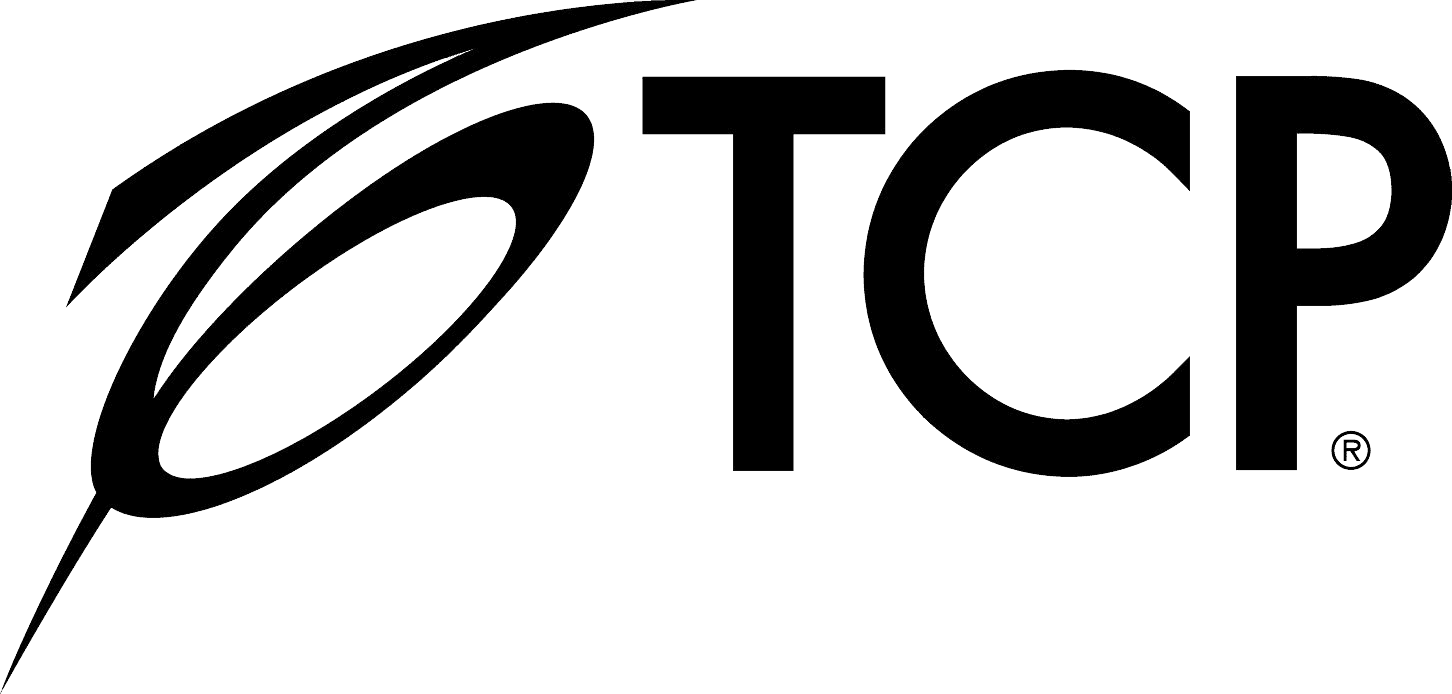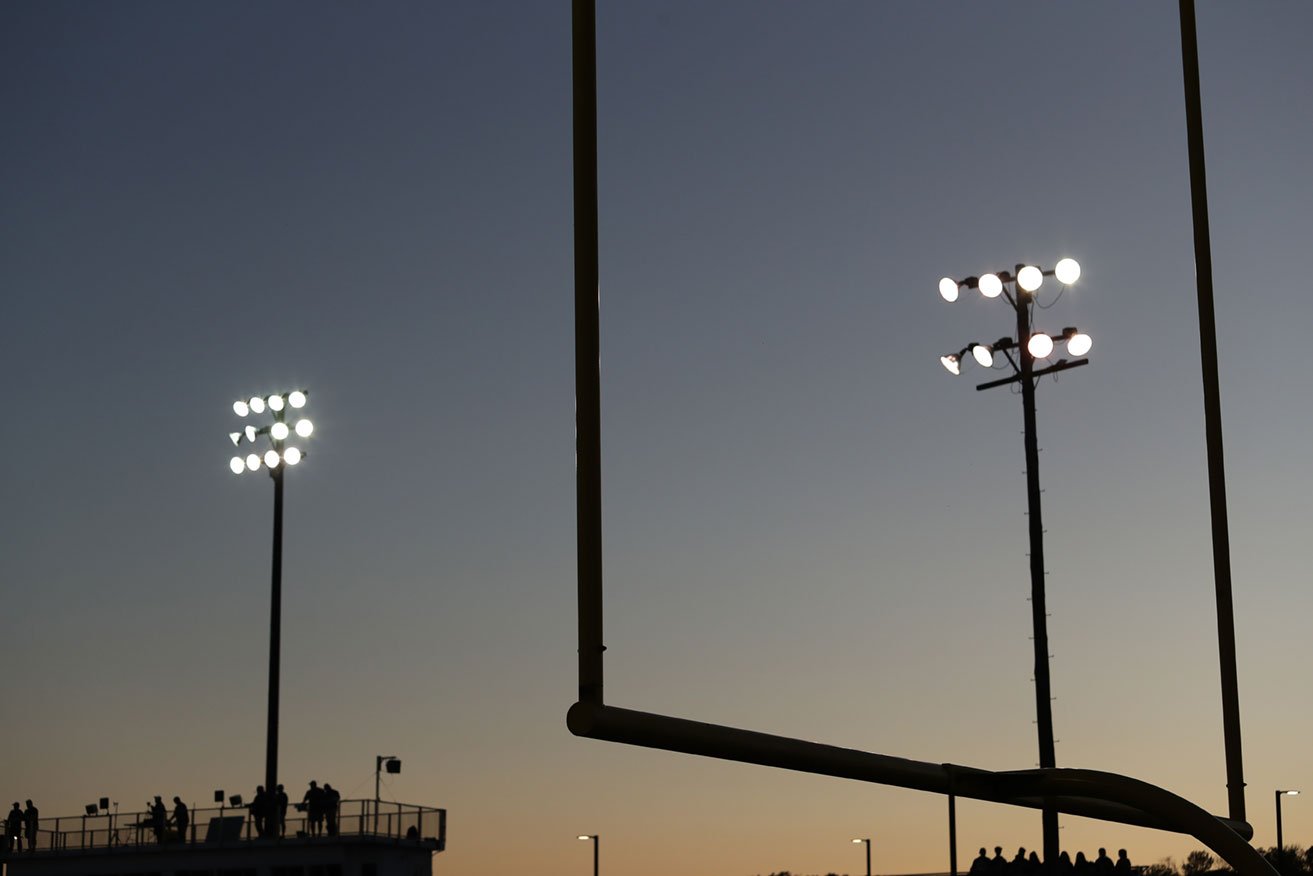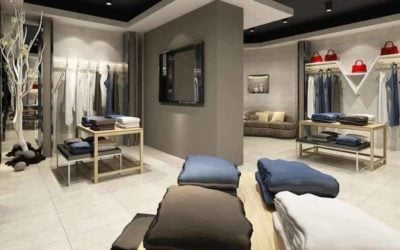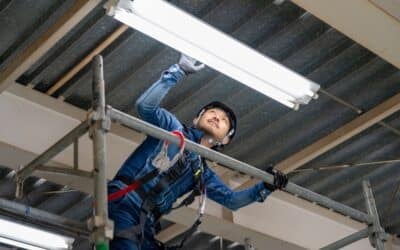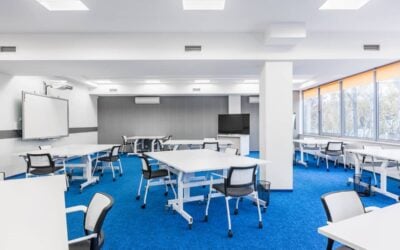Outdoor Lighting for Schools
Replacing Your Stadium Lights? Here’s What You Need to Know!
Nothing seems to bring communities together like local school sporting events. Longtime rivalries foster friendship and camaraderie among parents, sports fans, and members of the entire community.
In many towns nationwide, people support local school athletics more than professional big-league teams. Because school sporting events are so widely embraced, the outdoor arenas and fields where games take place need to be well maintained. Young athletes want to perform their best, and devoted fans (especially parents) want to see every single play.
To give everyone the best possible experience, school sports arena lighting has to be top-notch. Outdoor sports lighting must function properly, and most importantly, it must not interfere with or negatively impact gameplay.
What are Stadium Lights?
School stadium lights have some very important tasks to fulfill. The best field and arena lights are intended to enhance the live event, so athletes and fans can see well, especially during evening games. Stadium and field lights should be bright, but not blindingly bright, which could cause glare and visual discomfort. Placement and beam angle are also critical, because dim or inconsistent lighting creates uneven zones that adversely affect athletic performance.
Stadium lights are always mounted at elevated heights, similar to parking lot or street lights. Unlike those types of lighting, school stadium lights must be mounted slightly higher, and typically have smaller beam angles for better, more direct illumination of the playing field.
Types of Stadium Lights
When it comes down to lighting types, outdoor sporting arenas and playing fields have two primary options to choose from. For decades, most school stadiums relied on HID lighting for bright illumination. HID is still used, but many school systems are making the switch to LED area lights instead. Let’s take a closer look at each type.
HID Lights
HID (high intensity discharge) lamps produce exceptionally bright light. They’re generally used to illuminate large spaces, such as warehouses, parking lots, and stadiums.
HID bulbs create light by sending an electric charge between two electrodes, then through a plasma of ionized gas. After a series of reactions within the bulb, the electric surge eventually becomes bright light. HID bulbs require a ballast to operate properly. And they’re classified by the type of chemical used in the reaction process: metal halide, sodium, or mercury.
LED Lights
LED (light emitting diode) products create light by passing an electric current through a semiconductor microchip. This process illuminates the many tiny diodes, resulting in visible photons of light.
The technology behind this process uses far less energy than conventional lighting methods (including HID), and is one of the main reasons LEDs are becoming the industry’s top lighting choice.
Why Are Schools Switching from HID Lights to LED for Outdoor Stadiums?
Reliability and cost are why more schools are choosing LED over HID for their sports arena lighting. The advantages of LED area lights outshine HID lighting’s seemingly endless quality and performance issues. School systems can save thousands of dollars down the road when they switch to LED lighting. Lower utility bills and fewer maintenance fees contribute to long-term budget savings. Here are LED’s benefits at-a-glance:
Energy & Cost Efficiency
LED light sources generally consume 50% to 80% less energy when compared to similar HID fixtures. Because they use less energy to operate, LED outdoor sports lighting can result in significant monetary savings during the course of a school year – potentially thousands of dollars based on the amount of fixtures and hours of use.
Less Maintenance
LED fixtures are reliable and easy to maintain due to the lighting technology that makes them work. HID lights require more maintenance due to performance issues. Ballasts often need to be fixed, or the bulbs require frequent replacement, since overall lighting quality degrades rather quickly compared to LED.
Quality & Lifespan
LEDs produce consistently bright, non-flickering light for a very long time, typically 50,000 hours or more. This is almost twice as long as an average HID light fixture. Additionally, LEDs don’t fade or turn a different shade like HID lights seem to do after just 10,000 hours of standard use.
Sports Field Applications
Different sporting locations will require slightly different lighting tactics depending on the athletic activity performed there.
Baseball Fields
Evenly distributed light is important for a baseball field. Players need to see where the ball is at all times, which requires well-lit bases, and ample lighting for the outfield. An average high school baseball field needs 30-40 LED area lights mounted 40-60 feet above the ground.
Soccer Fields
The size of the field is critical when determining the lighting layout for an outdoor soccer venue. On average, most high school soccer fields measure 360 feet by 225 feet. Approximately 14,000 watts of lighting should provide enough illumination for a field this size.
Football Stadiums
Proper lighting for a high school football stadium is similar to lighting for a soccer venue. It is important to highlight the playing field from the perspective of the spectators. Also the entire field must be well-lit with emphasis on each goal post. Beam angles are important for football lighting to achieve optimum results without glare or brightness directed into the stands.
Tennis Courts
Compared to other sporting venues, tennis courts are intimate spaces that are generally enclosed. Lighting should be more concentrated, and focused right on the court for best results. Using multiple smaller LEDs placed 40 or 50 feet above the court is ideal.
TCP LED Sports Light
Are you interested in updating or replacing your school’s outdoor sports lighting? TCP’s LED Sports Light scores big when it comes to energy-efficiency, quality, and reliability. It’s easy to install, and features die-cast aluminum housing with an impact-resistant acrylic lens. Plus it can withstand extreme heat and cold, making it a top contender for outdoor applications.
Want to learn more? Check out TCP’s LED Sports Light here.
